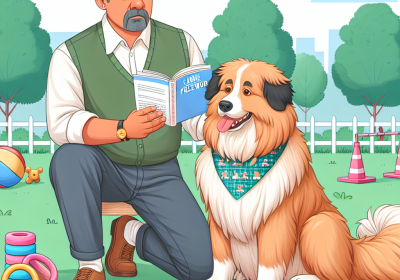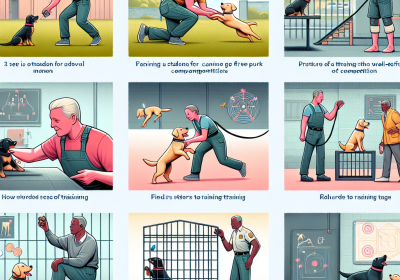Judging Criteria for Canine Freework Competitions
Table of Contents
- Evaluating Precision and Accuracy in Canine Freework
- Assessing Creativity and Originality in Canine Freework Routines
- Importance of Handler-Dog Synchronization in Canine Freework Competitions
Judging criteria for canine freework competitions are meticulously designed to evaluate the skill, creativity, and teamwork between a dog and its handler. These criteria encompass various aspects such as the dog’s obedience, precision, and fluidity of movement, as well as the handler’s ability to effectively communicate and guide the dog through a series of complex routines. Judges assess the overall performance based on elements like synchronization, difficulty of the tasks, and the originality of the routine. Additionally, the dog’s enthusiasm, confidence, and responsiveness are crucial factors that contribute to the final score. The goal is to ensure a fair and comprehensive evaluation that highlights the exceptional training and bond between the canine and its handler.
Evaluating Precision and Accuracy in Canine Freework
Evaluating precision and accuracy in canine freework competitions requires a meticulous approach, as these elements are fundamental to the sport’s integrity and the fair assessment of participants. Precision in canine freework refers to the exactness with which a dog performs specific tasks or movements, while accuracy pertains to the correctness of these actions in relation to the handler’s commands and the competition’s standards. To ensure a comprehensive evaluation, judges must consider several key factors, each contributing to the overall performance score.
Firstly, the synchronization between the dog and the handler is paramount. This aspect examines how well the dog responds to the handler’s cues and the fluidity of their interactions. A high level of synchronization indicates a strong bond and effective communication, which are essential for executing complex routines with precision. Judges look for seamless transitions between movements, minimal delays in response times, and the dog’s attentiveness to the handler’s signals. Any hesitation or miscommunication can detract from the overall score, highlighting the importance of a well-practiced and harmonious partnership.
In addition to synchronization, the accuracy of the dog’s movements is scrutinized. This involves assessing whether the dog performs each task as intended, adhering to the specific criteria outlined for the competition. For instance, if a routine requires the dog to navigate through a series of obstacles, judges will evaluate how accurately the dog follows the designated path, the precision of its movements, and its ability to complete the course without errors. Deviations from the expected performance, such as knocking over obstacles or missing cues, can significantly impact the dog’s score, emphasizing the need for rigorous training and attention to detail.
Moreover, the complexity of the routine plays a crucial role in the evaluation process. Judges take into account the difficulty level of the tasks performed and the dog’s ability to execute them flawlessly. A routine that incorporates advanced maneuvers and intricate sequences demonstrates a higher degree of skill and training, which can positively influence the overall score. However, it is essential that the complexity does not compromise the precision and accuracy of the performance. Judges must balance their assessment, recognizing the challenge presented by the routine while ensuring that the execution meets the competition’s standards.
Another critical factor is the dog’s consistency throughout the routine. Consistency reflects the dog’s reliability and steadiness in performing tasks accurately over time. Judges observe whether the dog maintains a high level of performance from start to finish, without significant fluctuations in precision or accuracy. Consistent performance indicates thorough preparation and a strong understanding of the tasks, which are vital for achieving a top score. In contrast, inconsistencies can suggest gaps in training or a lack of focus, which may be penalized accordingly.
Furthermore, judges consider the overall presentation and style of the routine. This includes the dog’s demeanor, the handler’s handling skills, and the creativity of the performance. A well-presented routine that showcases the dog’s abilities in an engaging and visually appealing manner can enhance the overall impression and contribute to a higher score. Judges appreciate routines that are not only technically proficient but also captivating and enjoyable to watch.
In conclusion, evaluating precision and accuracy in canine freework competitions involves a multifaceted approach that considers synchronization, accuracy of movements, complexity, consistency, and overall presentation. Judges must meticulously assess each of these elements to ensure a fair and comprehensive evaluation of the participants’ performances. By maintaining high standards and a keen eye for detail, judges uphold the integrity of the sport and celebrate the remarkable skills and dedication of both dogs and handlers.
Assessing Creativity and Originality in Canine Freework Routines
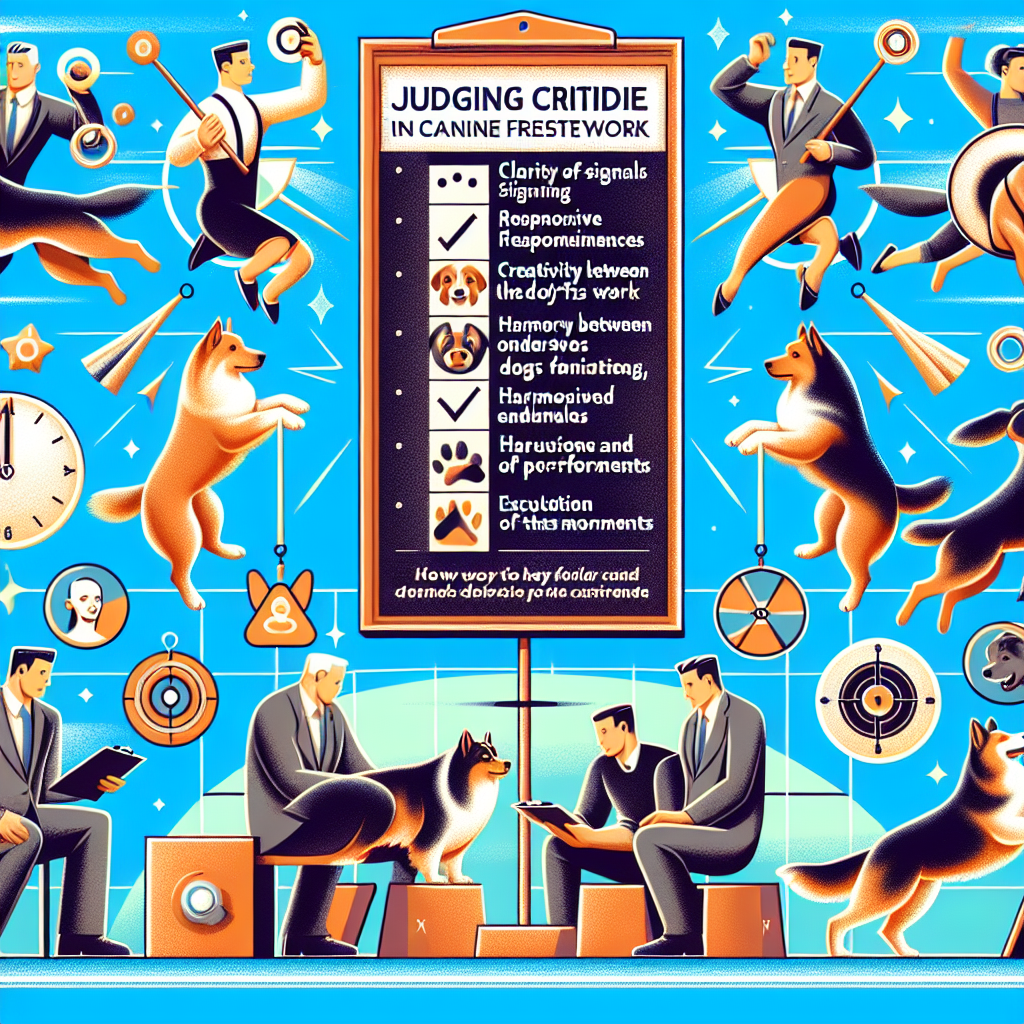
In the realm of canine freework competitions, assessing creativity and originality in routines is a multifaceted endeavor that requires a keen eye and a deep understanding of both canine behavior and performance art. Judges are tasked with evaluating not only the technical execution of the routines but also the innovative elements that set one performance apart from another. This process begins with an appreciation for the unique bond between handler and dog, which serves as the foundation for any creative expression in the sport.
To begin with, creativity in canine freework is often demonstrated through the incorporation of novel and unexpected elements within the routine. Judges look for routines that break away from traditional patterns and introduce new movements or sequences that challenge both the dog and the handler. This could involve the use of props, the integration of thematic storytelling, or the execution of complex tricks that require a high level of training and coordination. The originality of these elements is crucial, as it reflects the handler’s ability to think outside the box and push the boundaries of what is typically seen in the sport.
Moreover, the fluidity and coherence of the routine play a significant role in the assessment of creativity. A routine that seamlessly transitions from one element to the next, maintaining a consistent flow and narrative, is likely to score higher in terms of originality. Judges pay close attention to how well the routine is choreographed, ensuring that each movement serves a purpose and contributes to the overall theme or story being told. This level of cohesion not only showcases the handler’s creativity but also highlights their ability to communicate effectively with their canine partner.
In addition to the structural aspects of the routine, the emotional impact on the audience is another critical factor in judging creativity and originality. A truly creative routine has the power to evoke emotions, whether it be joy, excitement, or even a sense of wonder. Judges consider how well the routine engages the audience and whether it leaves a lasting impression. This emotional connection is often achieved through the use of music, expressive movements, and the evident enthusiasm of both the dog and the handler. The ability to captivate and move the audience is a testament to the handler’s creative vision and their skill in bringing that vision to life.
Furthermore, the adaptability and responsiveness of the dog are essential components in evaluating originality. A routine that showcases the dog’s ability to respond to subtle cues and adapt to unexpected changes demonstrates a high level of training and a strong bond between the handler and the dog. Judges look for routines where the dog appears to be an active participant, rather than simply following commands. This level of engagement indicates that the handler has successfully tapped into the dog’s natural abilities and instincts, resulting in a performance that is both original and captivating.
Ultimately, assessing creativity and originality in canine freework routines is a complex process that requires judges to consider a variety of factors. From the innovative use of elements and the coherence of the routine to the emotional impact on the audience and the responsiveness of the dog, each aspect contributes to the overall evaluation. By recognizing and rewarding these creative efforts, judges not only uphold the standards of the sport but also encourage handlers to continue pushing the boundaries of what is possible in canine freework.
Importance of Handler-Dog Synchronization in Canine Freework Competitions
In the realm of canine freework competitions, the synchronization between handler and dog stands as a pivotal criterion for judging. This intricate dance of coordination and mutual understanding not only showcases the dog’s abilities but also highlights the profound bond between the handler and their canine companion. The importance of this synchronization cannot be overstated, as it forms the foundation upon which the entire performance is evaluated.
To begin with, the essence of canine freework lies in the seamless execution of complex routines that require both the handler and the dog to be in perfect harmony. This synchronization is not merely about performing tricks in unison; it is about the fluidity and grace with which these actions are carried out. Judges keenly observe the subtleties of the interaction, noting how well the handler communicates commands and how promptly and accurately the dog responds. This dynamic interplay is a testament to the hours of training and the depth of the relationship between the duo.
Moreover, the synchronization between handler and dog is a reflection of the handler’s ability to read and anticipate the dog’s movements and vice versa. This mutual understanding is crucial, as it ensures that the routine flows without any visible hesitation or missteps. Judges look for this intuitive connection, as it demonstrates a level of proficiency and trust that goes beyond basic training. The handler’s body language, tone of voice, and timing of commands all play a significant role in guiding the dog through the routine, and any discordance can detract from the overall performance.
In addition to the technical aspects, the emotional resonance of the performance is also influenced by the synchronization between handler and dog. A well-synchronized routine exudes a sense of joy and enthusiasm that captivates the audience and judges alike. This emotional connection is palpable and adds an extra layer of depth to the performance. Judges are not only assessing the precision of the movements but also the overall impression and the emotional impact of the routine. A performance that is both technically sound and emotionally engaging is likely to score higher, as it demonstrates a holistic approach to canine freework.
Furthermore, the level of difficulty and creativity in the routine is often intertwined with the synchronization between handler and dog. Complex routines that involve intricate sequences and rapid transitions require an even higher degree of coordination. Judges take into account the challenge presented by the routine and how well the handler and dog navigate these challenges together. A routine that pushes the boundaries of what is possible in canine freework, while maintaining flawless synchronization, is highly regarded and often rewarded with higher scores.
In conclusion, the synchronization between handler and dog is a critical criterion in judging canine freework competitions. It encompasses not only the technical execution of the routine but also the emotional connection and overall impression. This synchronization is a reflection of the deep bond and mutual understanding between the handler and their canine partner, and it is this connection that ultimately sets the stage for a captivating and memorable performance. As such, handlers and dogs who exhibit a high level of synchronization are more likely to excel in these competitions, earning the admiration of judges and audiences alike.
Read more about Canine Freework
Canine Freework Competitions
The Ins and Outs of Canine Freework Competitions
Popular Canine Freework Competitions Around the World
How to Train for Canine Freework Competitions
Judging Criteria for Canine Freework Competitions
Tips for First-Time Competitors in Canine Freework


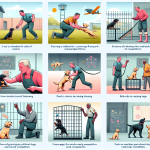
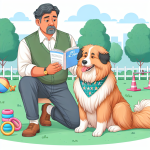
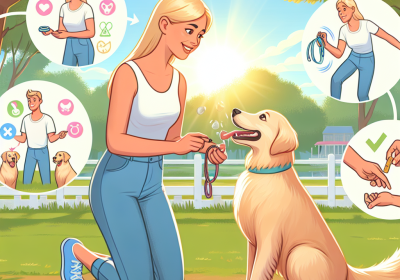
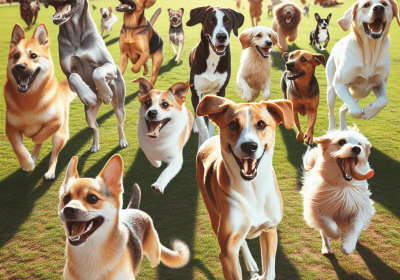
![The Dog Podcast Uncovers Startling Truths About What We Feed Our Dogs [Press Release]](https://theblogwave.com.au/wp-content/uploads/2024/08/canine-food-scaled-400x280.jpg)
